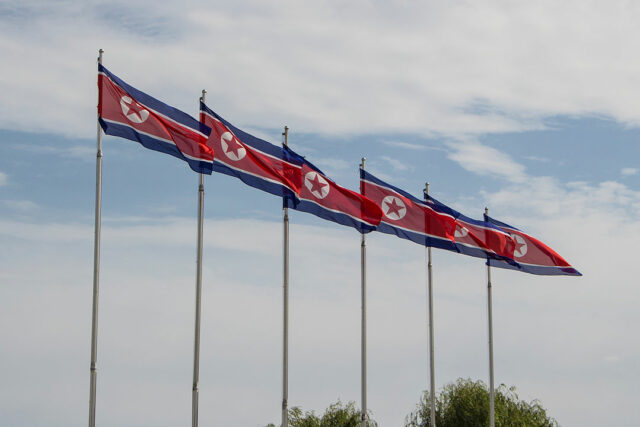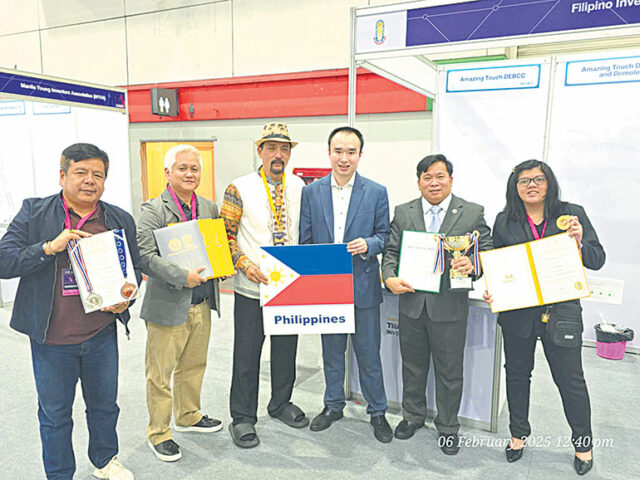By Luisa Maria Jacinta C. Jocson, Reporter
THE Philippines’ dollar reserves rose to $106.65 billion as of end-February, according to the Bangko Sentral ng Pilipinas (BSP).
Preliminary data from the central bank showed gross international reserves (GIR) rose by 3.3% month on month from $103.27 billion as of end-January.
This was also 4.6% higher than $101.99 billion in the same period a year ago.
The dollar reserves were also the highest in three months or since the $108.49 billion posted in November.
Ample foreign exchange buffers protect the country from market volatility and ensure that it is capable of paying its debts in the event of an economic downturn.
“The month-on-month increase in the GIR level reflected mainly the National Government’s (NG) net foreign currency deposits with the BSP, which include proceeds from its issuance of Republic of the Philippines global bonds,” the central bank said.
In January, the NG raised $3.3 billion from the sale of 10-year and 25-year fixed-rate global bonds and seven-year euro sustainability bonds. It was NG’s first global bond offering for the year.
BSP data showed the level of dollar reserves as of end-February is enough to cover about 3.8 times the country’s short-term external debt based on residual maturity.
It is also equivalent to 7.5 months’ worth of imports of goods and payments of services and primary income.
The rise in dollar reserves was also due to the “upward valuation adjustments in the BSP’s gold holdings due to the increase in the price of gold in the international market, and net income from the BSP’s investments abroad.”
The value of the central bank’s gold holdings went up by 2.5% to $12.5 billion at end-February from $11.75 billion a month ago. It likewise jumped by 16.6% from $10.34 billion in the same period in 2024.
Foreign investments stood at $89.41 billion as of end-February, up by 3.5% from $86.37 billion as of end-January and by 3.4% from $86.45 billion a year prior.
Meanwhile, net international reserves increased by 3.3% to $106.6 billion from $103.2 billion as of end-January.
Net international reserves refer to the difference between the BSP’s reserve assets (GIR) and reserve liabilities, including short-term foreign debt, and credit and loans from the International Monetary Fund (IMF).
The BSP’s reserve assets also include foreign investments, foreign exchange, reserve position in the IMF and special drawing rights (SDR).
Reserves with the IMF dipped by 0.2% to $670.2 million as of end-February from $671.3 million a month earlier. It also declined by 10.9% from $752.5 million in the year-ago period.
SDRs — or the amount which the Philippines can tap from the IMF’s reserve currency basket — edged higher by 0.2% to $3.74 billion from $3.73 billion in the previous month. Year on year, it dropped by 1.1% to $3.78 billion.
“The increase in GIR reflects strong external buffers, which are crucial for shielding the economy against external shocks,” Philippine Institute for Development Studies Senior Research Fellow John Paolo R. Rivera said.
Rizal Commercial Banking Corp. Chief Economist Michael L. Ricafort said the rise in GIR was due to the NG’s latest global bond issuance and continued gains in gold holdings.
“Gold holdings continued to improve, largely reflecting and consistent with the 2.1% monthly gain in world gold prices, which again posted new record highs recently partly due to some flight to safe havens such as gold amid the recent global market volatility,” he said.
Mr. Ricafort also noted the increase in foreign investments amid gains in the prices of US Treasuries in February.
“The benchmark 10-year US Treasury yield already eased to 4.3%, among the lowest in three months,” he added.
For the coming months, Mr. Ricafort said the GIR could be supported by the continued growth in overseas Filipino worker (OFW) remittances, business process outsourcing (BPO) revenues, exports and the quicker recovery in foreign tourism revenue.
“OFW remittances are also expected to remain resilient, helping bolster reserves. BPO and tourism can generate foreign exchange inflows that can strengthen GIR,” Mr. Rivera added.
Oikonomia Advisory and Research, Inc. economist Reinielle Matt M. Erece likewise said the GIR will be driven by “strong OFW remittances, foreign investments, a weak peso, and trade diversion.”
The BSP is expecting a GIR level of $110 billion for this year.
Mr. Rivera said the central bank’s forecast for dollar reserves this year is attainable, though this would depend on the BSP’s intervention in the FX market.
“A depreciating peso could lead to higher import costs, increasing demand for the US dollar which may put pressure on reserves. However, a weaker peso also benefits dollar-earning sectors, which could offset some of the risks,” Mr. Rivera said.
“A higher import bill due to infrastructure projects and rising oil prices could widen the deficit, requiring the BSP to use reserves to stabilize the peso,” he added.
The peso closed at P57.206 per dollar on Friday, strengthening by 11.4 centavos from its P57.32 finish on Thursday. This was the peso’s best finish in nearly five months or since its P57.205-a-dollar close on Oct. 11, 2024.
“A weak peso is not necessarily disadvantageous, as it makes exports more competitive in international markets. Higher exports mean more dollar inflows,” Mr. Erece said.
“Add to that the ongoing trade conflict among large producers, which can be an opportunity for the Philippines to be an alternative trading partner for other countries.”














